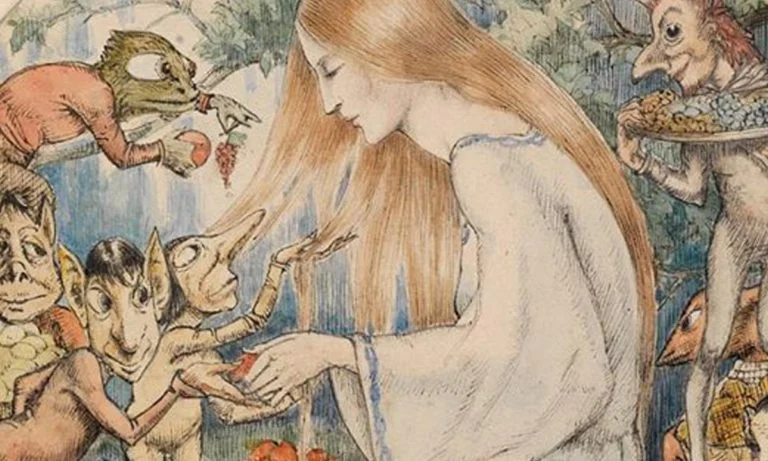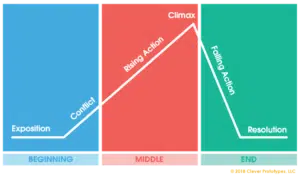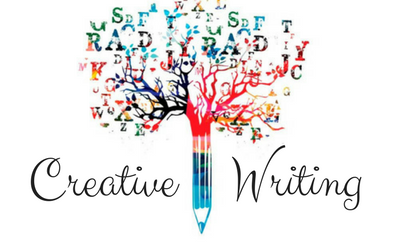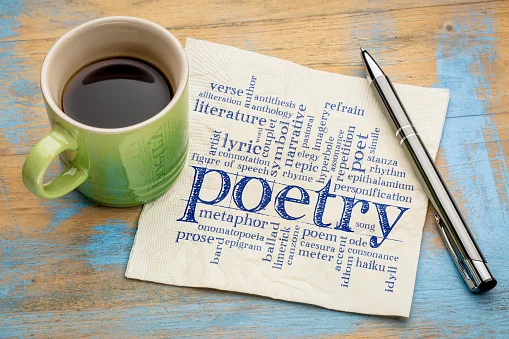Literary themes are, by definition, wide and global. Thus, it is no surprise, that some themes appear again in literature, from novels and short tales to poetry and creative nonfiction. However, works that have the same theme need not have a similar plot. In fact, the beauty of the theme of a story is that it may be addressed from various angles, wherein each tale offers a unique thematic statement. In this article, we will look at some of the most common themes in literature as well as tips to identify and add a theme to your story.
What is a Theme?
First, let’s begin by understanding the definition of a theme. The theme of a story refers to the underlying message that the writer wishes to convey in any piece of art. Whether you’re reading your favourite Disney novel or F. Scott Fitzgerald‘s The Great Gatsby, there will always be a recurring theme weaved throughout the plot. You will see the characters embracing or rejecting the theme of the story on several occasions, and you will see how their attitude to the theme affects the events that develop.
It is critical not to mix up the theme with the primary concept. The theme conveys a message of bravery, hope, or love. The core concept, on the other hand, is simply what the tale is about.
Importance of Theme
It’s excellent that you now know what a theme is, but that only answers half of our question. The next part is determining the significance of a theme in books and writing.
Also read about LGBTQ themed Books
Simply said, if a tale lacks a theme, the reader may not be able to connect with it. Keep in mind that the theme is linked to the protagonist‘s personal journey. It connects the character’s problems and passions to the exterior storyline, giving readers something to care about. What happens if that connection is broken? You’d have a narrative that goes nowhere and readers who lose interest.
Characteristics of an Effective Theme
An effective theme must be broad enough to capture the overall meaning of the work while being particular enough to reflect the writer’s personal perspective. If the theme or key concept statement adheres to the principles below it will strongly convey the writer’s interpretation.
Every theme, in some way, makes a statement or a point.
When the author writes a theme, they are substituting one sentence for the whole content. That implies that they will have to compress the meaning of the story to fit it into a single phrase. For example, “The subject of the text is love and death”, aptly represents what the story is about.
The theme or primary concept statement should explain the work’s overall meaning rather than specific events, activities, or characters.
The line “Luke defeats Darth Vader” is a story synopsis rather than a theme or major concept assertion. Instead, the phrase “Good defeats evil” is a better description of the story of Star Wars. This theme stems from what the characters do, word choice, organisation, and other rhetorical factors.
The theme should represent the overall ideals of the work, rather than simply one or two lines, paragraphs, or sections.
Examine the ending of the tale, the last lines of a poem, or any concluding concepts to see if the text reflects what you think its basic meaning is. If it does, then the author has done a good job of portraying the theme of his story.
Main Themes in Literature?
Power
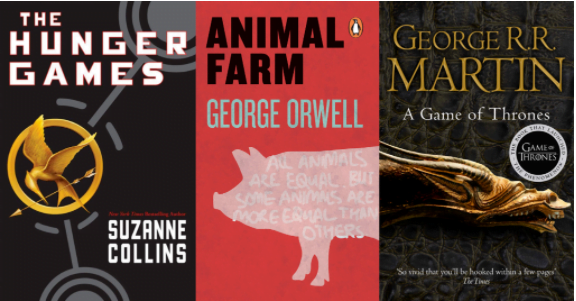
Power or the desire for it causes people to do insane things, as you can see each time you turn on the news. This is, of course, mirrored in literature. From dystopias like Suzanne Collins’ The Hunger Games trilogy to fantasy such as the Lord of the Rings trilogy, or George R. R. Martin’s little-known series- A Song of Ice and Fire, and classics like George Orwell’s Animal Farm, the theme of power has driven innumerable creative undertakings. The focus is sometimes on power’s corruptive qualities, sometimes on the exchange of power between tyrannical states and people, and sometimes on the power of dreams alone. Whatever the case may be, the aspect of power remains important.
Identity
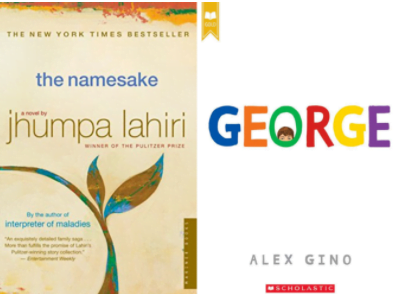
Identity and the labels that come with it are significant driving factors in a lot of literature. From portraying one’s ethnic or racial identity, as in Brit Bennett’s The Vanishing Half and Jhumpa Lahiri’s The Namesake to gender identification in Alex Gino‘s George and mental health diagnosis in Sylvia Plath’s The Bell Jar, who we are is a basic subject we must confront. Literature, for some writers, is a place to try to answer that issue for themselves or the group with whom they identify. For others, it is a place to reject the necessity for labels and embrace a self that lives at the intersections of multiple groups. This is also an issue related to how culture influences how we view ourselves and others.
Family
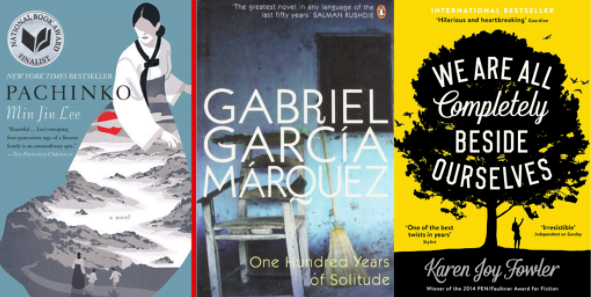
Family relationships and dynamics are the most intriguing and nuanced sources of conflict in literature. Books have always questioned what a family is and will continue to illustrate both dysfunctional and wholesome relationships within them, from intergenerational epics like Min Jin Lee’s Pachinko and Gabriel Garcia Marquez’s 100 Years of Solitude to contemporary novels like Karen Joy Fowler’s We Are All Completely Beside Ourselves.
Loneliness
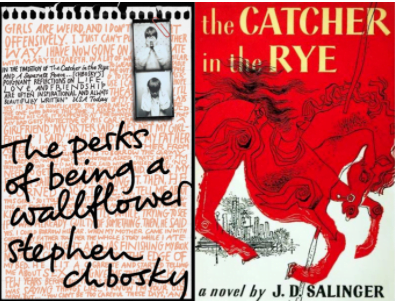
There’s no lack of loners, isolated misfits, or content-to-be-alone introverts in literature, from the classic alienated high students in The Perks of Being a Wallflower and The Catcher in the Rye to more contemporary bestsellers like Eleanor Oliphant Is Completely Fine. Whether the topic is used to demonstrate that human nature is intrinsically lonely, to condemn reliance, or to argue that loneliness is a societal luxury, stories that portray loneliness are always moving stories.
Friendship
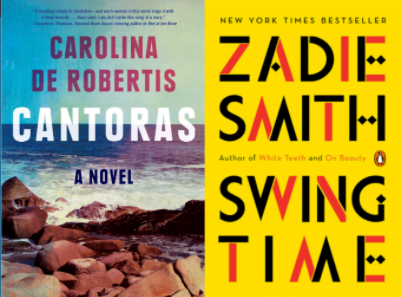
It’s frequently stated that friends are the family we pick for ourselves, and the relationships we form with them are just as complex, possibly stressful, or heartwarming as familial bonds. Childhood buddies are frequently crucial to children’s classics such as The Secret Garden and Charlotte’s Web. Friendship is frequently lauded in stories for young readers for its selflessness and togetherness. It’s still a popular topic in works about early adulthood, coming-of-age stories, and even later life, as seen by Teddy Wayne’s Apartment, Zadie Smith’s Swing Time, Hanya Yanagihara’s A Little Life, as well as Carolina de Robertis’ Cantoras. Friendship is also thematized in these stories for its absence, conflicts, shortcomings, and faults. No single friendship is similar, and the same is true of their literary presentations.
Hope

Hope blooms in the most unexpected places, and in the world of novels, that frequently means stories of loss, misery, or calamity. Memoirs of pain or adversity, such as Paul Kalanithi’s When Breath Becomes Air, tend to conclude on a hopeful note. Similarly, memoirs addressing social concerns such as racism or climate change also tend to find grounds for optimism. Angie Thomas’s The Hate U Give, Richard Powers’ The Overstory, and Ruth Ozeki’s A Tale for the Time Being are three examples.
Love
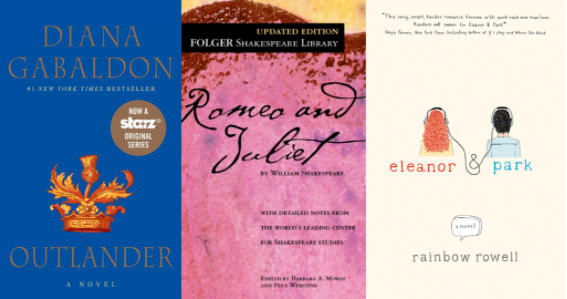
Romance is another of those unbreakable forces that have sustained works of literature from the beginning of time. Romantic love is at the core of numerous genres, from literary fiction and classics like Romeo and Juliet to YA heartwarmers like Rainbow Rowell’s Eleanor and Park and Casey McQuiston’s Red, White, and Royal Blue to epic historical fiction like Diana Gabaldon’s Outlander.
Some authors employ this issue to produce deliciously comfortable works that provide readers with a break from their daily routine, while others wonder what it means to be reliant on another person or examine the shifting dynamics within a relationship.
Fate vs. free will
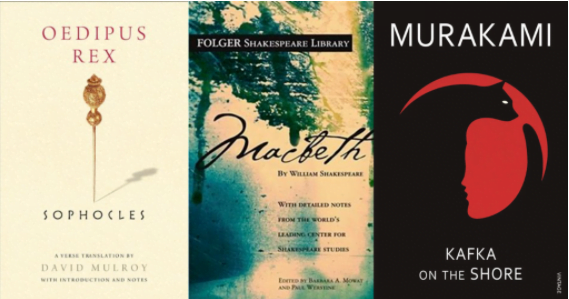
The friction between one’s power to control one’s destiny and their externally determined fate is a typical sort of conflict that can be found in many timeless masterpieces, particularly plays. From the ancient Greek play Oedipus Rex to Shakespeare’s Macbeth and Christopher Marlowe’s Doctor Faustus, to the beloved children’s series Harry Potter and Haruki Murakami’s Kafka on the Shore, the tension arising from external expectations and pressures, as well as the concept of self-fulfilling prophecies is fated to be a part of literature forever.
War
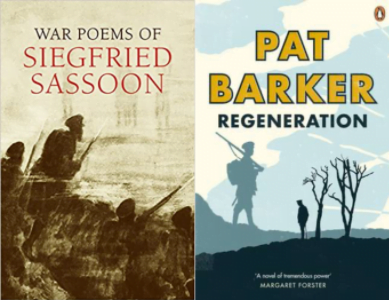
From war poets like Siegfried Sassoon and Wilfred Owen who wrote about the toll of World War I to modern novels exploring its emotional and social consequences, stories about violence and conflict could constitute an entire genre of fiction.
The coming of age
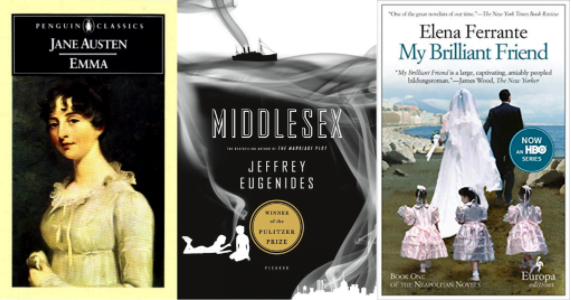
Entering adulthood is another phase that involves numerous changes, therefore the age at which people reach this milestone is a recurrent subject. Growing up, maturing, and coming into your own are thematized in literature as diverse as Jane Austen’s Emma, Jeffrey Eugenides’ Middlesex, and Elena Ferrante’s My Brilliant Friend to depict the uncertainty and empowerment that comes with this period of life.
Survival
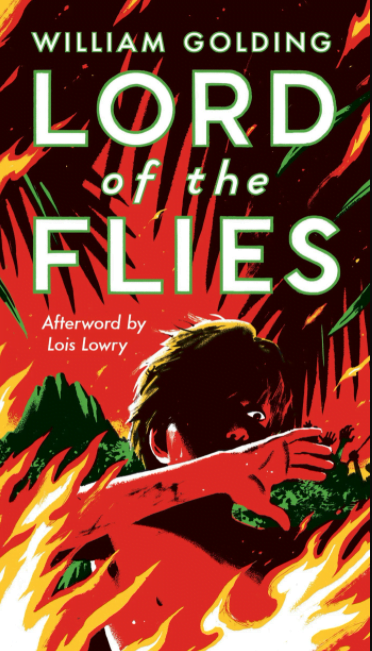
A good survival narrative, in which the main characters must overcome insurmountable difficulties simply to live another day, is enthralling. Almost every Jack London novel fits within this category since his characters frequently confront nature. Lord of the Flies is another narrative in which life and death play crucial roles. This idea is evident in Michael Crichton’s Congo and Jurassic Park”
Climate change and the environment
Regrettably, the globe is warming. As the planet’s temperature rises, so do our fears about our species’ future, leading to an increase in the predominance of the environment or climate change as key topics in literature. With the rise of eco-fiction and “cli-fi,” works like Barbara Kingsolver’s Flight Behavior, John Lanchester’s The Wall, and Dr. Seuss’s The Lorax will be studied more than ever.
Childhood
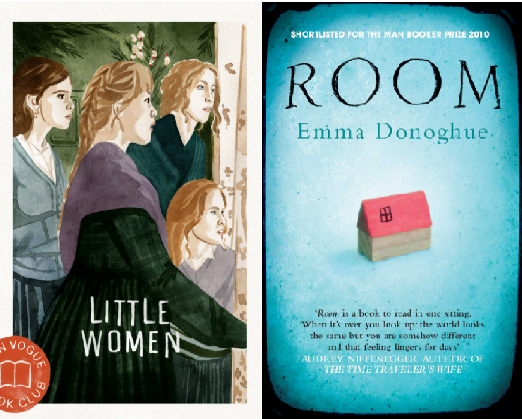
Our childhood years do not necessarily define us, but they do play a significant role in shaping who we desire to be. So, whether it’s to nostalgically recall our childhoods, to acknowledge the bitter realisations that followed, or simply to consider the point of view of a child, childhood continues to be a prevalent theme in literature. Three examples are Little Women by Louisa May Alcott, The Red Pony by John Steinbeck, and Room by Emma Donoghue.
Good and evil
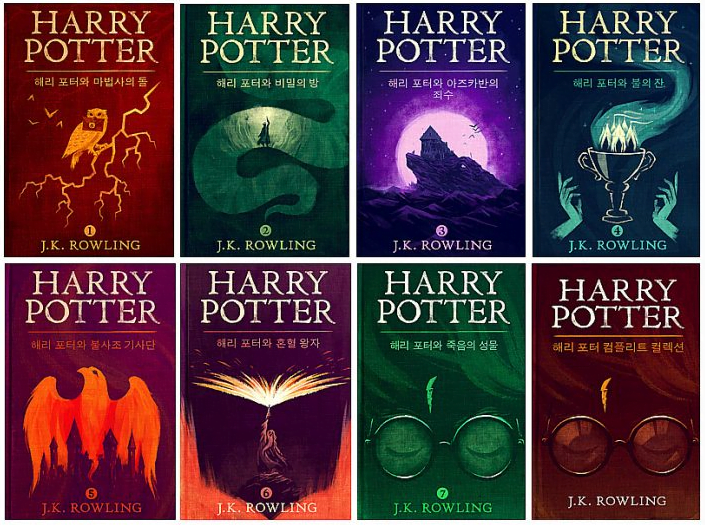
Another prominent topic is the coexistence of good and evil. Many of these other themes, such as war, judgement, and even love, are frequently seen alongside it. This is a key subject in books such as the Harry Potter and Lord of the Rings series.
The circle of life
The concept that life begins with birth and ends with death is not new to authors. Some may look into immortality, like in Dorian Gray’s The Picture of Dorian Gray, while others, such as Leo Tolstoy’s The Death of Ivan Ilych, shock a character into accepting death as an unavoidable reality. The circle of life premise gets entirely flipped upside down in a narrative like F. Scott Fitzgerald’s The Curious Case of Benjamin Button
Three Methods for Determining Your Theme
What do you think about life, the planet, and human nature?
The majority of stories begin with a spark of an idea. You may only have a hazy sense of the narrative or a snippet of information about one of your characters, but chances are, you already know what they want to say about a certain issue. In addition, you probably already have something to say about life, the world, or human nature, and thus, want people to perceive the world in the same way that you do. So, asking about life, human nature or the planet is a great way to come up with a theme of a story.
How does your character’s personality evolve from beginning to end?
What happens in the storyline does not represent the point of a tale. Rather, the point is conveyed through how the plot’s actions affect the protagonist inside. This inward transformation is referred to as your character’s arc. In most cases, the way your character evolves throughout the novel is directly tied to the message you want to convey to your readers.
What is your preferred genre?
Another technique to come up with a theme for your novel is to think about the genre. Each genre, in general, has its own theme or universal subject. Click to visit Podium School and read article on Genre. As an example:
| Themes | Genre/ Type of story |
| Survival, life and death, courage, and good vs. evil are among themes explored | Action |
| Surviving, life and death, terror, safety, and good vs. evil are among themes explored | Horror |
| Friendship, passion, human connection, and intimacy are all explored | Romance |
| Justice, injustice, safety, and good vs. evil are among topics covered in mystery fiction. | Mystery |
| Power, revolution, equality, and corruption are all topics covered in society stories. | Society |
| Thrillers investigate topics such as survival, life and death, and good vs. evil. | Thrillers |
| Worldview (or coming-of-age) tales delve into topics such as ignorance, knowledge, significance, and maturation. | Coming of Age |
| Survival, courage, honour, and safety are all themes in war stories | War |
Identifying Themes and Literary Analysis – Download
Unique Theme? Not Necessary
At some point or the other, every author would’ve come across the dilemma of not having a unique theme. But, here’s a little secret: themes are usually always basic or cliché from the start. How many books have you read that can be summarised as “good vs. evil” or “love conquers all?”
These common topics do not bore readers. They become bored of seeing the same subjects conveyed in the same way, in the same genre, with the same narrative and characters, and in the same order.
So don’t be concerned if your solution seems basic or cliché. As you come to know your tale better, your topic will develop, deepen, and evolve. If you can describe what your book is about and why conveying this tale is important to you, it should be enough.
Put your characters in opposition to one another.
The majority of topics revolve around contentious beliefs that cause human conflict. By putting your characters in conflict, you’ll give them an additional opportunity for action, decisions, and dialogues that will allow them and your audience to confront your theme head-on.
Use symbols to represent your subject.
Objects, letters, or situations that are used to illustrate your theme are known as symbols. A symbol may occur only once or several times throughout the tale. For example, a green light represents Gatsby’s desire for a better life with Daisy in The Great Gatsby. He reaches for it at the start of the novel and at the conclusion, it seemed unreachable.
Motifs can help you reinforce your topic.
A motif is a repeating picture or element that, via repetition, reveals the primary concepts in a tale. Again in The Great Gatsby by F. Scott Fitzgerald, Gatsby’s continuous, opulent parties, highlight the topic of excess, consumerism, and the pursuit of the American ideal.
More Tips
Look for universal themes.
Use a component of the storyline that appears in the stories of people of different ages, ethnicities, genders, and walks of life as your theme.
Choose a theme that will remain with your reader.
Consider what themes you want your reader to remember long after they’ve forgotten the storyline of your novel.
Make an outline.
Make your theme a part of the planning process to guarantee that it appears throughout your work.
Weave your theme throughout the story.
Make sure your main character experiences events that accentuate the topic as you fill in the specifics of each act. If you’re juggling many storylines, check if you can have your theme appear in each of them, ideally in different ways.
Include a variety of themes.
Many books and tales do not have a single topic. Some authors begin writing with a major idea in mind, but as they write, they discover a new topic that also resonates within the confines of their tale.
Don’t restrict yourself.
Take caution not to limit your ideas to how topics have been represented in previous novels, novellas, and short stories. While some may claim that fiction has a finite number of themes, each narrative is unique. Even the most universal ideas may take on a variety of interpretations in the setting of diverse stories.
FAQ’s
What is the difference between the theme of a story and the morals it teaches?
The author’s moral is a specific lesson that he is attempting to impart. Meanwhile, the theme can be more generic. In fact, a tale can include several different themes. Readers discover the theme of a story as they read since they recur repeatedly.
For example, the theme of Romeo and Juliet is the power of love. Love pulled these two characters together, and nothing could keep them apart. However, the moral of the story is completely different (not let old family scars fester unnecessarily).
Spot out the difference between the theme of a story and the mood?
The theme is the core message that the writer wishes to express, whereas the mood is a literary aspect that creates certain sensations through words and descriptions. Your readers’ emotional responses might be stimulated by the atmosphere, allowing them to connect with your writing work.
Share with your friends

